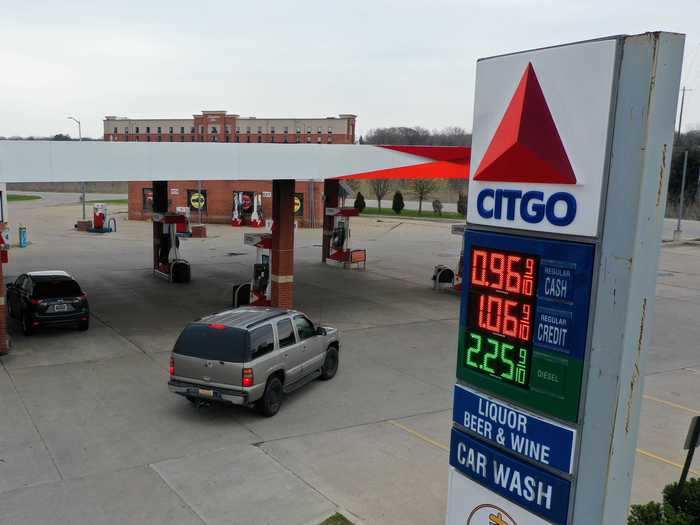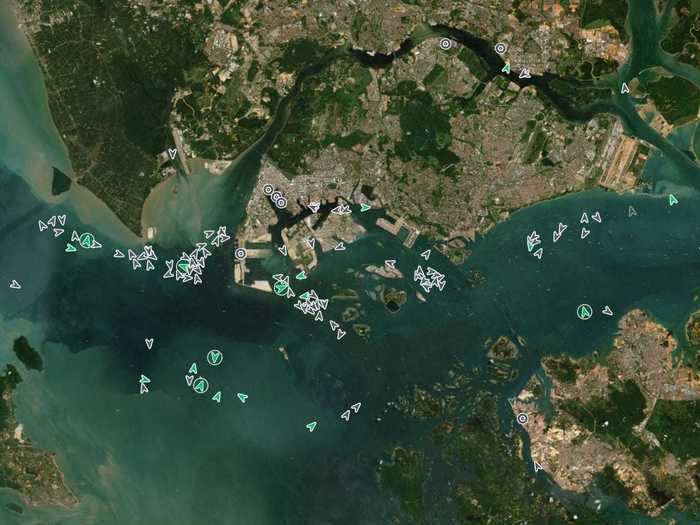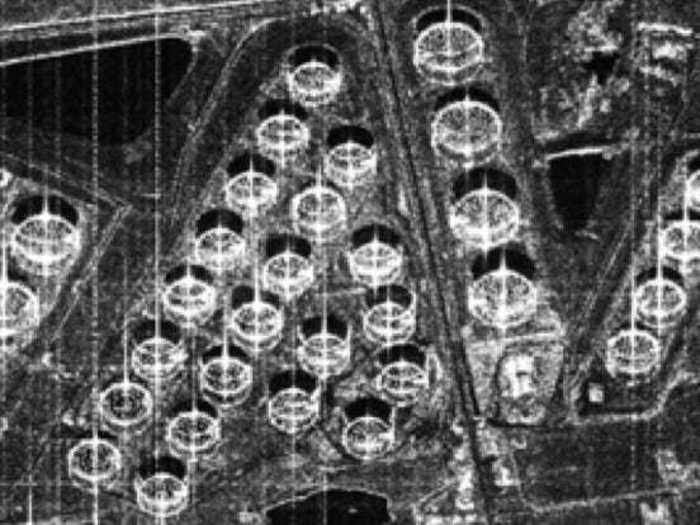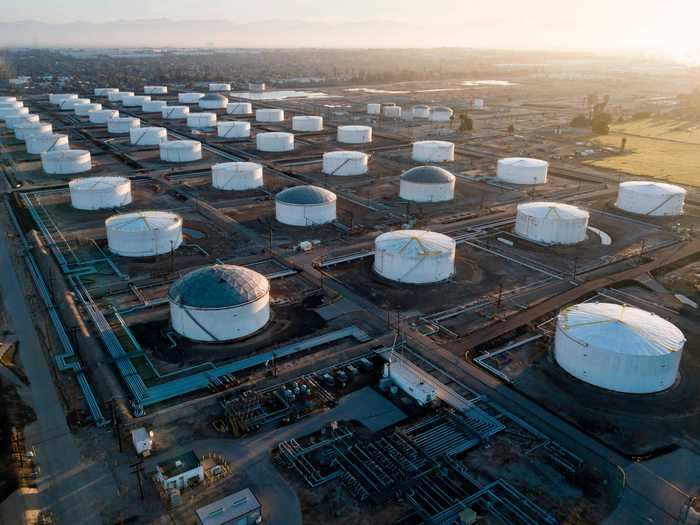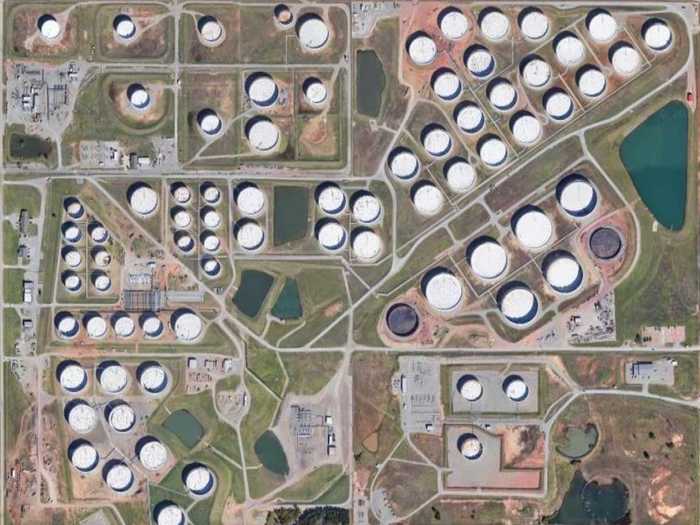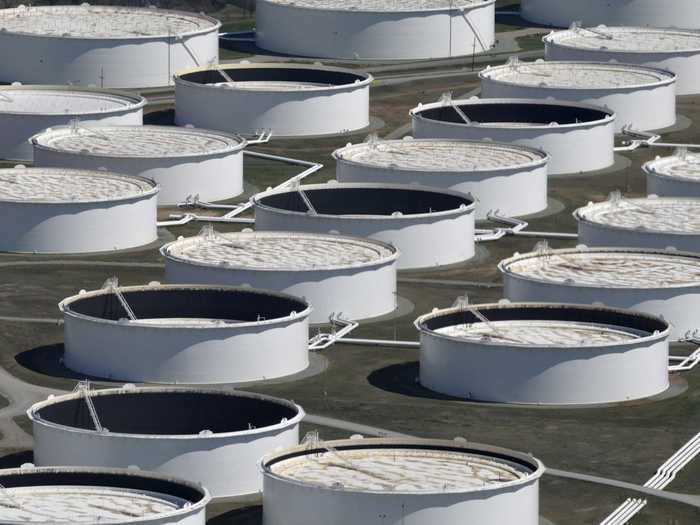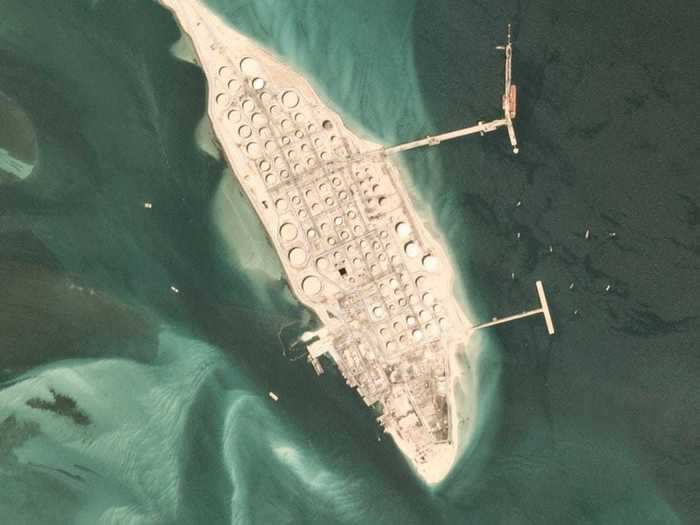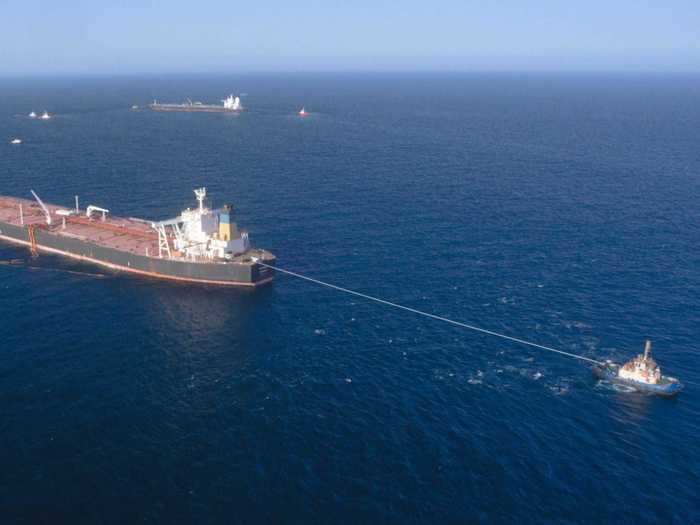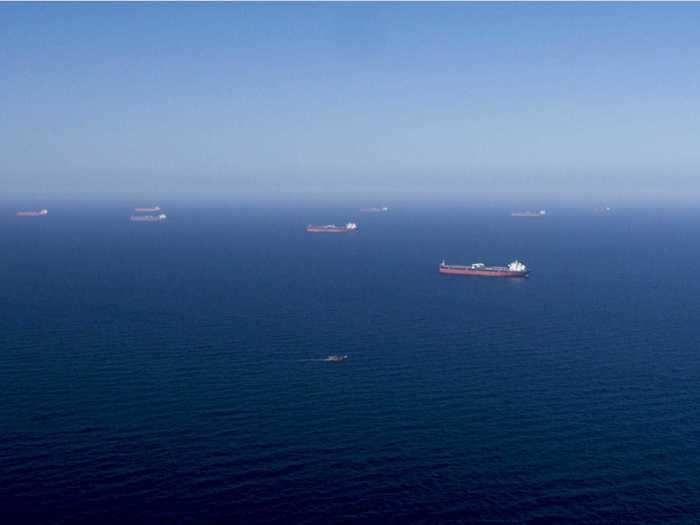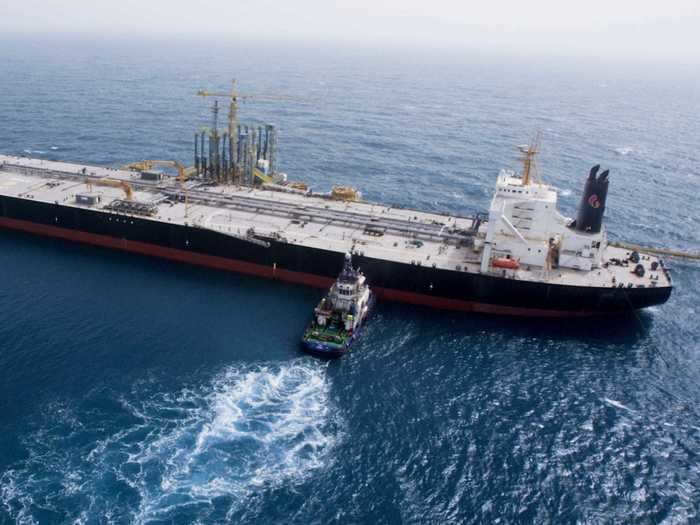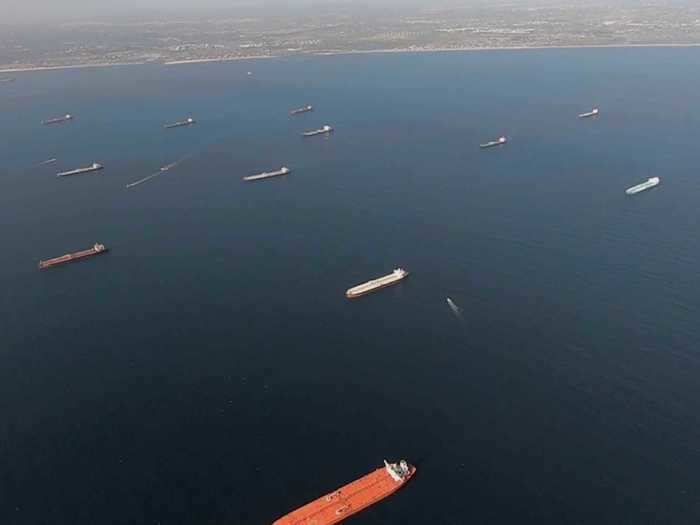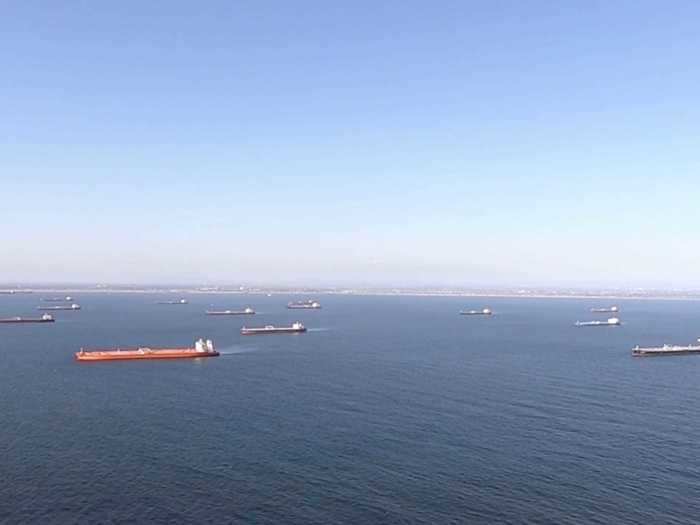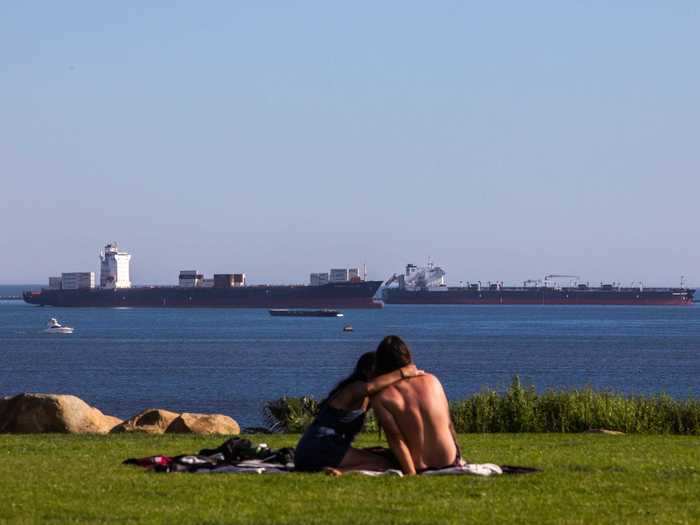Oil tankers carrying more than 20 million barrels of oil float off the coast of California.Petty Officer Third Class Aidan Cooney/US Coast Guard
- A pandemic-led demand crunch is causing storage tanks around the world to fill up with oil that no one wants.
- Today, nearly 90% of the globe's 4.3 billion barrels of crude oil storage is full, according to the research firm Rystad Energy. The rest could fill up in as few as three weeks.
- Most of that excess oil ends up in floating-roof storage tanks. But millions of barrels are also sitting idly in supertankers, which have nowhere to go.
- A handful of companies like Kpler and Orbital Insight have developed creative ways to track the oil glut involving sensors and satellite imagery.
- Visit Business Insider's homepage for more stories.
Normally, the westward view from Long Beach, California is serene, with shimmering turquoise stretching for miles towards the horizon.
Normally, that horizon is not dotted with dozens of oil supertankers. But then again, there's nothing normal about the first few months of 2020.
In a matter of weeks, stay-at-home orders to prevent the spread of coronavirus have sapped demand for oil, driving the price to 20-year lows and testing the limits of storage.
Click here to subscribe to Power Line, Business Insider's weekly energy newsletter.
Global oil storage capacity is roughly 4.3 billion barrels, and nearly 90% of it is already full, according to the consultancy Rystad Energy. The firm now sees storage reaching "tank tops" in as few as three weeks.
That means there's a massive amount of oil with nowhere to go.
Most of it ends up in large floating-roof oil tanks, such as those that surround the city of Cushing, Oklahoma, where the US benchmark, West Texas intermediate (WTI), is delivered. Other oil is sitting in caverns underground.
More still is stuck inside supertankers — like those seen off the coast of Long Beach on Thursday last week.
Read the original article on
Business Insider
Cheap oil means cheap gas — today, it's about $1.77 a gallon, on average. But experts say that's hardly a silver lining
A station in Southgate, Michigan was selling gas for under $1 last week
Gregory Shamus/Getty Images
When the price of oil falls, so does the price of the gasoline you buy at the pump. On Monday, the national average was down to just $1.77 a gallon, according to AAA.
At face value, that's good news for gas-station owners, who set their own prices — because they could enjoy wider profit margins.
"Gas stations right now, they have never seen the economics better, ever," Patrick De Haan, an analyst at GasBuddy who's been tracking the prices closely, said. "If this environment could stay consistent, you'd be seeing hundreds of gas stations open up."
But don't be mistaken, Kloza said: This is not a good thing.
Road fuel consumption is down one-third this month, according to Rystad. Plus, gas isn't where stations make their money. They make more in sales of jerky, chips, and other in-store purchases that depend on foot traffic, which has all but evaporated.
Read more: A top energy analyst pinpoints the 3 winners and 3 losers in this week's historic oil-price collapse
Some firms also track the movement of oil supertankers
Data from Kpler show crude oil and fuel oil tankers in the Malacca Strait
Kpler
They can figure out how much oil the tankers are carrying, in part, by looking at what's called draft — the distance between the waterline and the bottom of the ship.
So, how do we know how much oil is in storage?
A satellite image of oil tanks, which computers can use to measure capacity
Orbital Insight
Companies that track storage like Orbital Insight and Kpler run satellite imagery through computers, which measure the shadows cast across oil tanks. The size of the shadows reveals how much oil is in each of them, as Business Insider previously reported.
Companies also bounce beams of cloud-penetrating radar off the tank tops.
Globally, nearly 90% of all available crude storage is full
Oil tanks in Carson, California
Robyn Beck/AFP via Getty Images
Tanks in Cushing, Oklahoma are about 80% full
Oil tanks in Cushing, Oklahoma
Kpler
Oil tanks in Cushing, Oklahoma, a major hub, have less than 20 million barrels of spare capacity left, according to Kpler.
"With current rates of build it will be full within a matter of weeks," the firm said in a recent report.
The tanks are designed to minimize emissions and the risk of explosion
Nick Oxford/Reuters
Most of the world's storage is in floating-roof tanks, like those pictured here
Oil tanks in Ras Tanura, Saudi Arabia
Orbital Insights
There are roughly 4.3 billion barrels of crude oil storage worldwide, per Rystad Energy, and roughly two-thirds of that is in floating-roof tanks.
If the US blocks imports of crude, Saudi Arabia may re-route the tankers
Saudi Aramco
The US is considering banning imports of crude oil, Reuters reports, which could cause the kingdom to re-route the ships.
The tankers are carrying more than 40 million barrels of crude oil
Saudi Aramco oil tankers
Saudi Aramco
The 20 or so tankers, which are set to arrive in May, are carrying more than 40 million barrels of crude oil, the Washington Post reports.
There are also about 20 supertankers, like the one pictured here, headed from Saudi Arabia to the Gulf of Mexico
A small boat fills a supertanker with oil
Saudi Aramco
The US Coast Guard said it was monitoring the ships
Oil supertankers off the coast of California
US Coast Guard Petty Officer 3rd Class Aidan Cooney
The US Coast Guard, which is typically not patrolling oil tankers, recorded a video of the ships last week.
"Due to the unique nature of this situation, the Coast Guard is constantly evaluating and adapting our procedures to ensure the safety of the vessels at anchor and the protection of the surrounding environment," Commander Marshall Newberry, who works with the Los Angeles Coast Guard, said in a statement.
With land-based storage nearly filled up, there's nowhere to put the oil
There were 27 tankers, according to the US Coast Guard
Petty Officer Third Class Aidan Cooney/US Coast Guard
Oil tankers are typically used to transport — not store — oil. But with global demand down nearly 30% this month and tanks nearing capacity, there's nowhere for the oil to go.
There were 27 oil supertankers anchored off the coast of Southern California last Thursday
Oil tankers off the coast of Long Beach, California
APU GOMES/AFP via Getty Images
The tankers were carrying more than 20 million barrels of crude oil, making it the largest quantity of crude ever to float off the West Coast, according to Kpler, a company that tracks oil storage.

